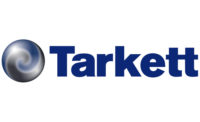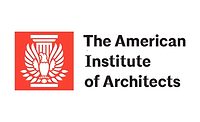Architects Join Forces with Industry Leaders to Combat Climate Change

San Francisco, Calif. -- The American Institute of Architects (AIA) joined forces with design and building leaders in San Francisco at the Carbon Smart Building Day event to strengthen the industry’s commitment to reducing greenhouse gases in the built environment.
"The architectural profession has had success demonstrating building models and technology, but scaling up carbon-smart building practice is the central challenge,” said Carl Elefante, 2018 AIA president. “We need elected officials to support policies and programs that incentivize carbon-smart buildings. If we’re going to meet our future carbon goals, we’ll need the investment in resources and research today to get us there.”
As part of AIA’s efforts to advocate for improved policies and programs, the Institute signed onto the Carbon Smart Building Declaration. The declaration challenges signatories to intensify efforts in eliminating greenhouse gas emissions (also known as carbon emissions) in all new buildings by 2030 and all existing buildings by 2050. It also encourages adopting technologies, processes, materials and data that support eliminating or greatly reducing the carbon footprint in the built environment.
The AIA is also partnering with the Smart Surfaces Coalition in its “Stay Cool Save Cash” initiative. The campaign is educating city leaders about the benefits of implementing cost-effective smart surfaces that reduce heat and better manage runoff to prevent flooding, while also saving cities money. Preferred products include cool roofs and pavements that reflect light to reduce the absorption of heat; green roofs and trees that provide shade and prevent flooding; solar panels that convert sunlight into electricity; and porous pavements that reduce flooding when used on roads and sidewalks. The coalition’s goal is to recruit 250 cities that adopt smart surfaces as part of their policy by 2023.
The Institute also announced its endorsement of the CO2toEE coalition, which calls for changing government policy so that building owners are eligible to receive credit when they reduce carbon emissions after investing in energy efficiency. Currently, building owners who invest in energy efficiency enjoy lower energy consumption costs but are not compensated for cutting CO2 emissions. The CO2toEE initiative would ensure building owners receive the benefits of achieving both goals.
The Institute also supports sustainable design through its materials. Last week, the Institute rolled out a new guide, Healthier Materials Protocol, which it developed in partnership with Arup. The guide assists architects with identifying building products that are environmentally friendly and includes definitions, specifications, tracking tools, case studies and other resources to assist with building product selection.
Combating climate change continues to be a leading issue for AIA leadership. The AIA board of directors also recently adopted new ethical standards to the Code of Ethics that address sustainability. The adopted ethical standards provide architects with aspirational goals for sustainable design practices, including promoting designs that conserve water and energy; incorporating adaptive strategies to anticipate extreme weather; and using products that minimize exposure to toxins.
For more information, visit www.aia.org.
Looking for a reprint of this article?
From high-res PDFs to custom plaques, order your copy today!








